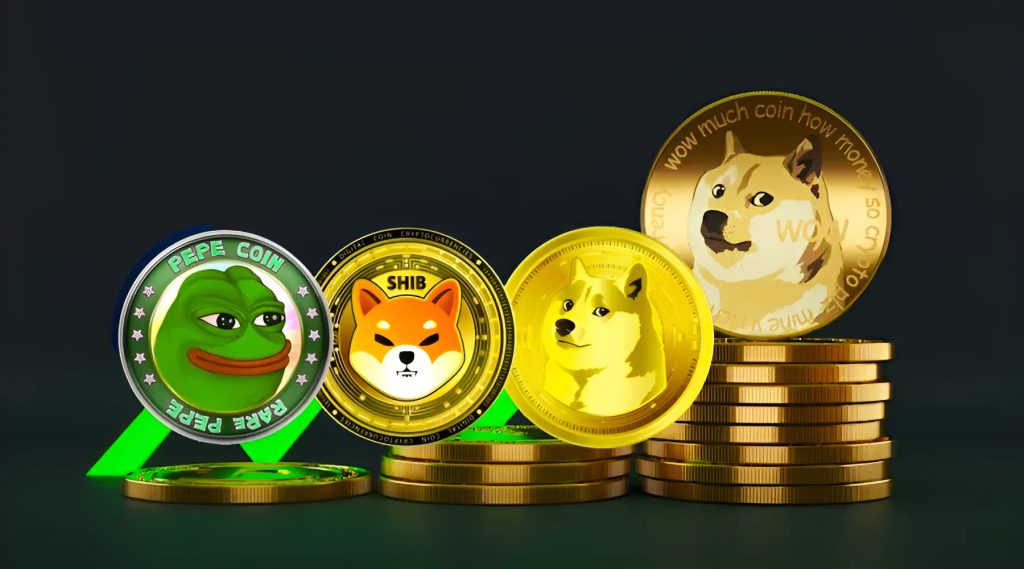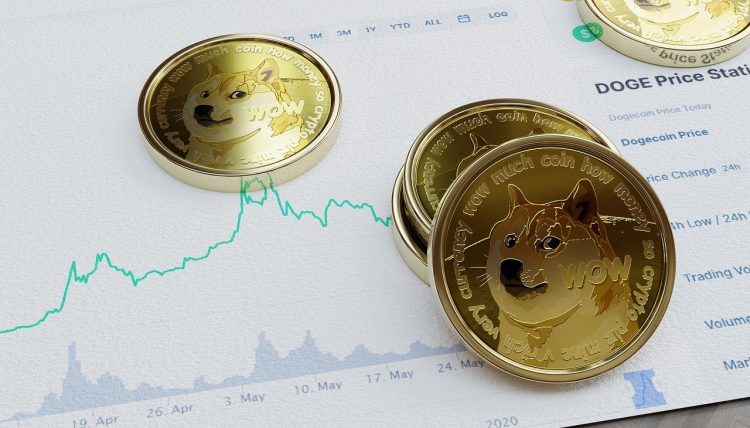In the ever-shifting world of cryptocurrency, few phenomena have captured mainstream attention quite like meme coins. From Dogecoin’s viral rise fueled by Elon Musk’s tweets to Shiba Inu’s meteoric ascent into the ranks of top cryptocurrencies, meme coins have transformed from internet jokes into billion-dollar assets. Yet, behind the hype lies an important question: Are meme coins legitimate investment opportunities, or are they simply high-stakes gambles with fleeting relevance?
This article explores the dual nature of meme coins—drawing on case studies like Dogecoin (DOGE) and Shiba Inu (SHIB), analyzing community-driven valuations, and evaluating the risk-reward profile that defines this unpredictable sector of crypto markets.
1. The Origins of Meme Coins: From Jokes to Juggernauts
Meme coins emerged as cultural artifacts long before they became viable investments.
1.1 Dogecoin: The Original Meme Coin
- Launched in 2013 by Billy Markus and Jackson Palmer as a parody of Bitcoin.
- Used the Shiba Inu dog meme for branding, signaling its lighthearted nature.
- Gained traction as a “tipping” currency in online forums and Reddit communities.
- Despite no initial roadmap, Dogecoin developed into a top-10 cryptocurrency by market cap, largely due to community enthusiasm and celebrity endorsements.
1.2 Shiba Inu: The Dogecoin Killer
- Created in 2020 as a direct competitor to Dogecoin, branding itself the “Dogecoin killer.”
- Differentiated itself with a more structured ecosystem, including ShibaSwap (DEX), NFT projects, and the SHIB metaverse.
- Benefited from strong community momentum (“Shib Army”) and speculative trading that pushed it into the spotlight.
These examples demonstrate the viral and cultural power behind meme coins—showing how internet culture can catalyze massive adoption, even in the absence of fundamental utility.
2. Community-Driven Valuations: Why Meme Coins Defy Traditional Metrics
Unlike Bitcoin, which derives value from scarcity and network security, or Ethereum, which thrives on its smart contract utility, meme coins rely primarily on social consensus and community energy.
2.1 The Power of Virality
- Meme coins thrive on memetic spread—tweets, TikTok videos, and celebrity mentions can trigger exponential price moves.
- In 2021, a single Elon Musk tweet often moved Dogecoin’s price by double-digit percentages.
2.2 The “Cult” of Community
- Communities like the Shib Army or Doge Army provide relentless promotion, memes, and grassroots marketing.
- Unlike traditional crypto communities that emphasize whitepapers and technical milestones, meme coin supporters emphasize loyalty, humor, and inclusivity.
2.3 Speculation as Utility
- Many critics argue meme coins lack utility. Supporters counter that speculation itself is utility, creating liquidity and opportunities for traders.
- Community-driven valuation means meme coins often behave more like cultural assets (similar to collectibles) than traditional financial instruments.
3. The Risk-Reward Profile of Meme Coins
Investing in meme coins is not like buying into Bitcoin or Ethereum. The risks are greater, but so are the potential rewards.
3.1 The Risks
- Extreme Volatility: Meme coins can surge 500% in a week and crash 90% just as quickly.
- Lack of Fundamentals: With no intrinsic utility or capped supply (in Dogecoin’s case), value depends entirely on sentiment.
- Rug Pulls and Scams: Many newer meme coins are low-effort copycats designed solely for pump-and-dump schemes.
- Regulatory Risks: With speculative frenzy often attracting regulators, meme coins may face legal challenges.
3.2 The Rewards
- Asymmetric Returns: Early investors in Dogecoin and Shiba Inu made life-changing profits—sometimes from investments as small as a few hundred dollars.
- Community Resilience: Unlike failed small-cap projects, meme coin communities often keep coins alive purely through enthusiasm.
- Liquidity Opportunities: Popular meme coins often trade with high volume, allowing active traders to profit from swings.
The risk-reward equation is similar to venture capital investing—most meme coins fail, but the few that succeed can deliver extraordinary returns.

4. Lessons from Dogecoin and Shiba Inu
By looking at the journeys of DOGE and SHIB, investors can learn how meme coins evolve and why they succeed or fail.
4.1 Dogecoin’s Longevity
- Despite its origins as a joke, Dogecoin became widely accepted for payments and tipping.
- Its survival was cemented by Elon Musk’s endorsement, which propelled it into mainstream headlines.
- However, its infinite supply model raises long-term inflationary concerns.
4.2 Shiba Inu’s Ecosystem Building
- Shiba Inu attempted to differentiate by adding utility:
- ShibaSwap DEX
- Leash and Bone tokens to expand the ecosystem
- Metaverse and NFT initiatives
- By doing so, SHIB transformed from a pure meme into a quasi-utility token, strengthening its long-term potential.
4.3 The Takeaway
- Meme coins that remain purely speculative may struggle to sustain value.
- Those that transition into offering real-world use cases or ecosystems can extend their lifecycle and investor appeal.
5. Investor Strategies for Navigating Meme Coins
Given their volatility, how can investors approach meme coins without falling victim to hype?
5.1 Treat Them Like High-Risk Bets
- Only allocate a small portion of your portfolio to meme coins—money you can afford to lose.
- View them more as lottery tickets than core investments.
5.2 Time the Hype Cycles
- Meme coins thrive on viral moments. Entry and exit timing often matter more than long-term holding.
- Monitor social media, Google Trends, and trading volume for signals of hype cycles.
5.3 Differentiate Between Jokes and Builders
- Coins that evolve into ecosystem projects (like SHIB) offer more resilience.
- Pure clones with no vision are almost always destined to collapse.
5.4 Take Profits Early
- Meme coins can skyrocket fast but collapse even faster.
- Seasoned traders set profit-taking targets and avoid holding out for the absolute peak.
6. The Broader Impact of Meme Coins on Crypto
Meme coins may be seen as unserious by some, but they have undeniably shaped the crypto landscape.
- Mainstream Adoption: Dogecoin introduced millions to crypto, lowering the barrier for new entrants.
- Cultural Fusion: Meme coins merge finance with internet culture, showing that value can be as much about identity and belonging as about utility.
- Market Experimentation: Meme coins act as a proving ground for decentralized community-building and grassroots marketing.
Despite their volatility, meme coins highlight a powerful truth: crypto is as much about human psychology as it is about technology.
Conclusion
So, are meme coins a gamble or an opportunity? The answer lies somewhere in between. For the risk-tolerant, meme coins offer the possibility of life-changing gains—but they also carry the near-certain risk of massive losses. Their community-driven valuations make them unpredictable, but also uniquely powerful cultural assets.
For investors, the best approach is to treat meme coins as speculative plays, not core holdings. Dogecoin and Shiba Inu show that meme coins can evolve beyond jokes, but the majority remain high-risk gambles. Ultimately, meme coins remind us that in the world of finance, narratives and culture can be just as valuable as fundamentals—at least for a time.

























